Meet the Pacarana: The Large and Slow-Moving Rodent of South America
Although first scientifically described back in 1873, there is still little known about the mysterious pacarana (Dinomys branickii). This curious creature is the sole living member of an entire family of South American rodents, the Dinomyidae. This otherwise extinct family includes several giant prehistoric species, including the largest rodent ever discovered, Josephoartigasia monesi.
Today, the pacarana is the third largest living rodent, after the capybara (Hydrochoerus hydrochaeris) and the North American beaver (Castor canadensis). Its closest living relatives are the other members of the Cavioidea superfamily, including cavies (capybaras, guinea pigs, and maras), agoutis and acouchis, tuco-tucos, and pacas, the last of which they most closely superficially resemble. In fact, the pacarana’s common name comes from the Indigenous Tupi language, meaning “false paca!”
What Do Pacaranas Look Like?
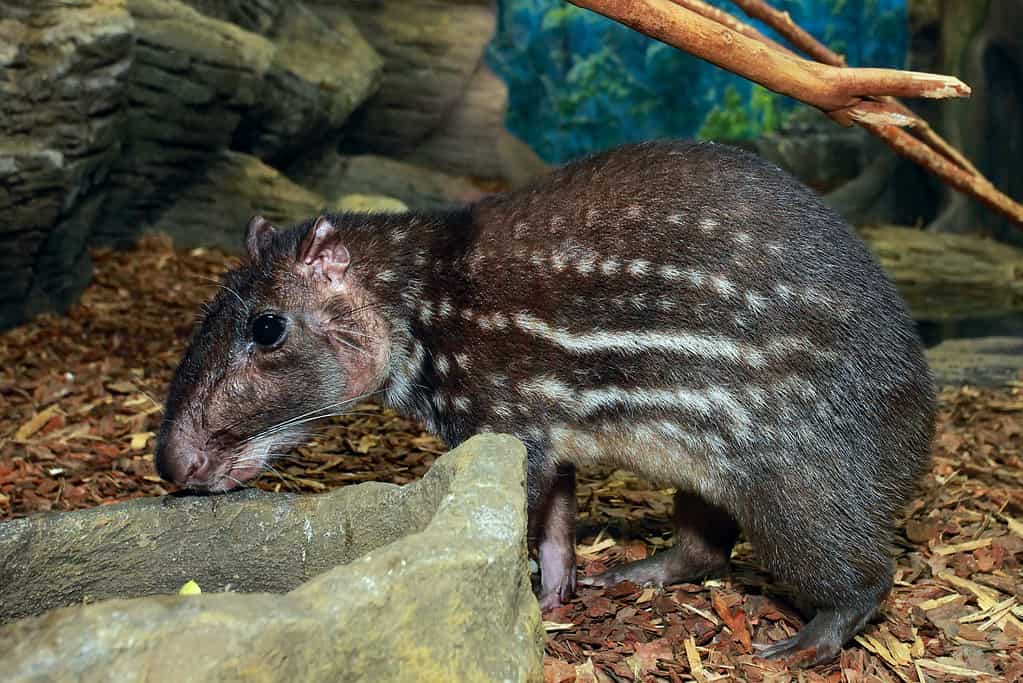
©TatianaMironenko/ via Getty Images
The pacarana is a stocky rodent, with a large head and thick neck, robust body, thick tail, and short legs. It has small eyes, short and round ears, a blunt snout with long whiskers, and a deeply cleft upper lip. The plantigrade feet each have four digits tipped with long, curved claws. It has coarse fur that is colored dark brown to almost black and is marked by rows of white stripes and spots. (This same kind of fur pattern has been identified in other species as a sort of camouflage, meant to mimic the dappling of sunlight on the forest floor.)
Adult pacaranas weigh an average of 10 – 15 kg with a body length of 73 – 79 cm and a tail length of 19 -20 cm.
Where Do Pacaranas Live?
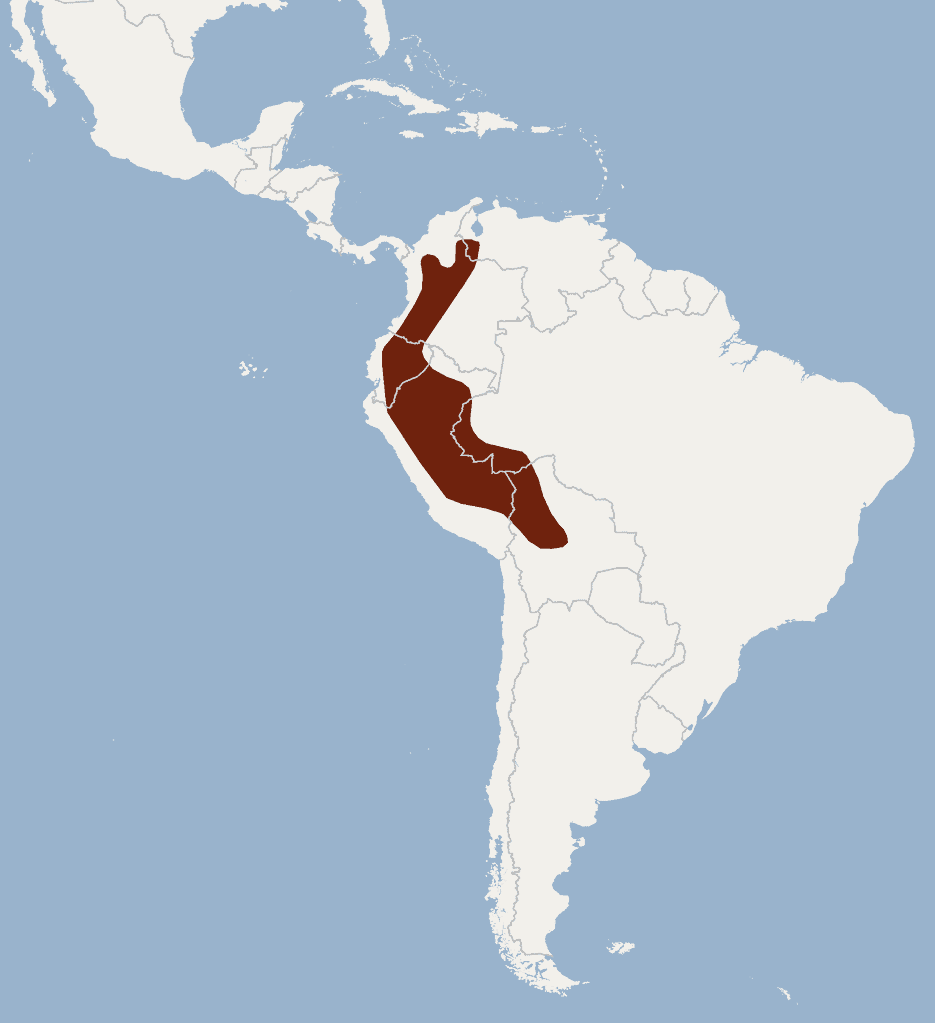
©A proietti / CC BY-SA 4.0 – License
The pacarana is a Neotropical species native to western South America. Its range extends from the western Amazon River basin to the Andes Mountains. It lives in tropical rainforest habitats with elevations ranging anywhere from valleys of 250 meters to upper montane slopes of 3,200 meters.
Pacarana Behavior
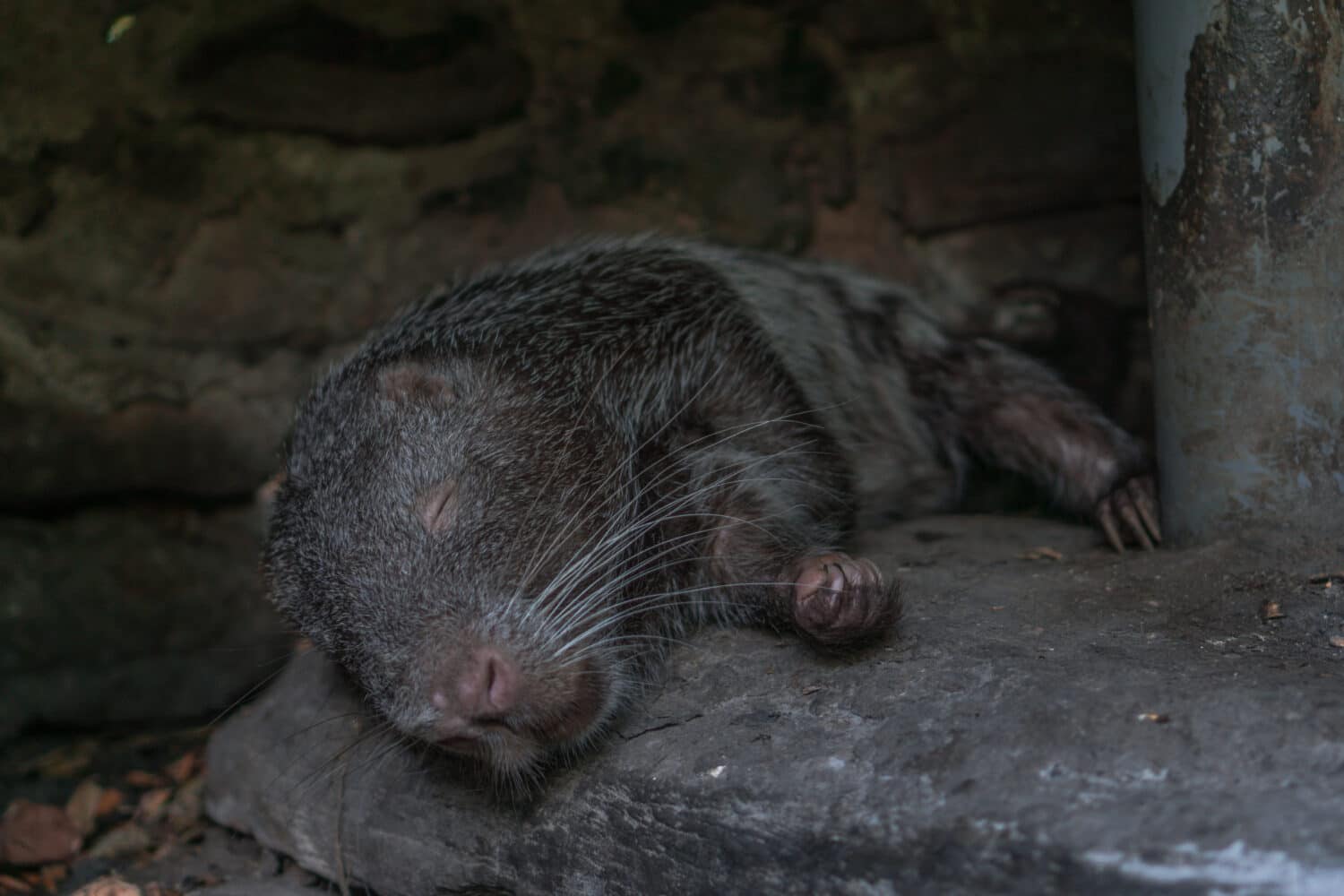
©Andrew J. Clark/Shutterstock.com
Pacaranas are nocturnal animals. They are slow-moving creatures, roaming the forest floor at night foraging for food, and staying hidden during the day. They are believed to be primarily ground-dwelling animals. However, they have claws that are well-suited to both digging and climbing. While they shelter in natural dens such as caves, rock crevices, and hollow logs, they can likely also dig their own burrows and expand existing holes as needed. They can also climb trees, although this seems more common amongst juveniles.
While not highly territorial, pacaranas do mark their habitat. They do this both by gnawing and by rubbing their cheeks on surfaces, leaving behind a whitish secretion produced from glands near their eyes. Pacaranas also have a complex communication system. They produce a variety of vocalizations, including songs, whines, whimpers, hisses, and growls, along with foot-stomping and teeth-chattering.
Unfortunately, scientists still know little else about their behavior in the wild. However, keepers report them to be non-aggressive and easily tamed in captivity. They are described as calm, peaceful, and friendly to humans.
What Do Pacaranas Eat?
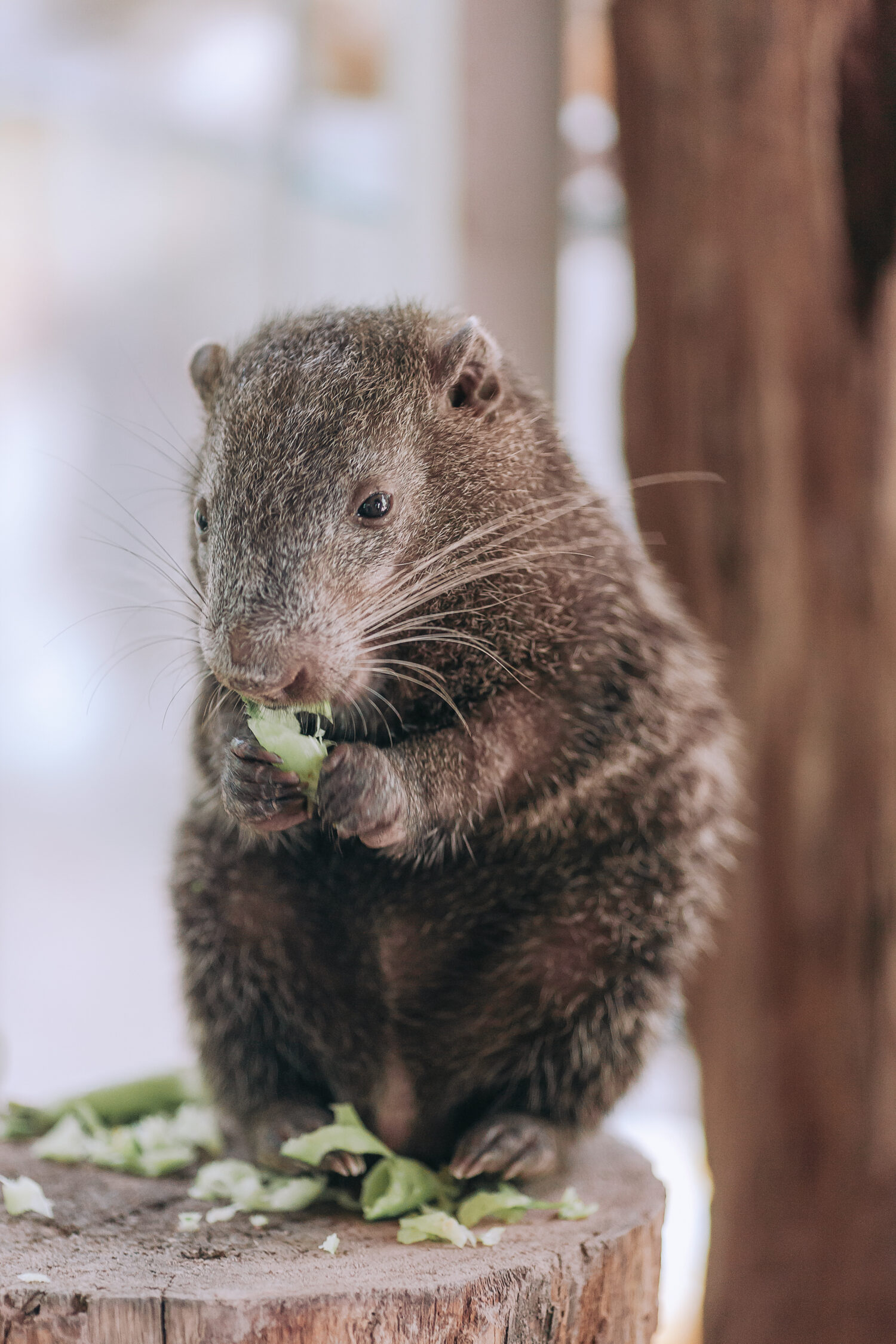
©Milton Rodriguez/Shutterstock.com
Pacaranas are herbivores. In the wild, they eat fruits, leaves, shoots, and stems of plants. They eat by sitting up on their hind legs and grasping their food with their front paws, similar to squirrels.
Pacarana Predators
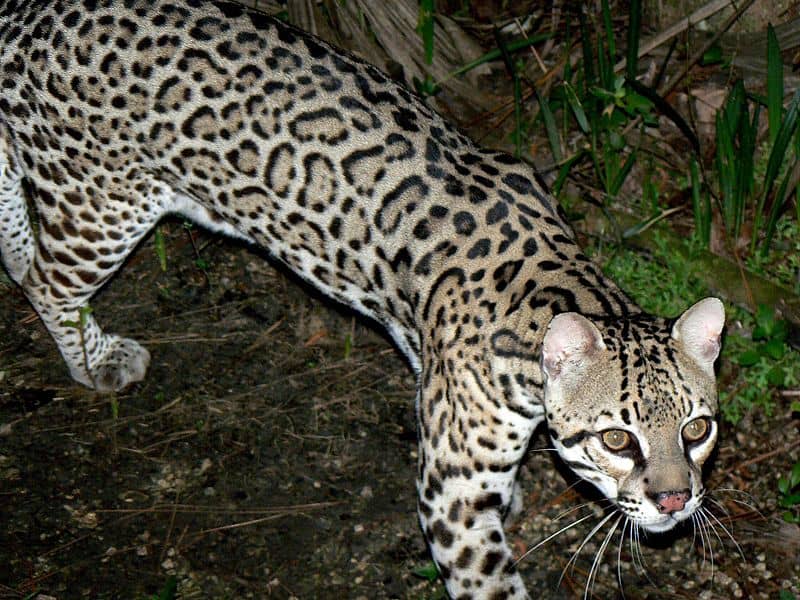
©RawheaD Rex, CC BY-SA 2.0, via Wikimedia Commons – License
The top predator of pacaranas is probably humans, who hunt them as food in their native range. Other native mammal predators also hunt them, including ocelots (Felis pardalis), South American coatis (Nasua nasua), and tayras (Eira barbara). When threatened, the pacarana can defend itself with its long front claws, or retreat into a hole or crevice.
Pacarana Reproduction and Life Span
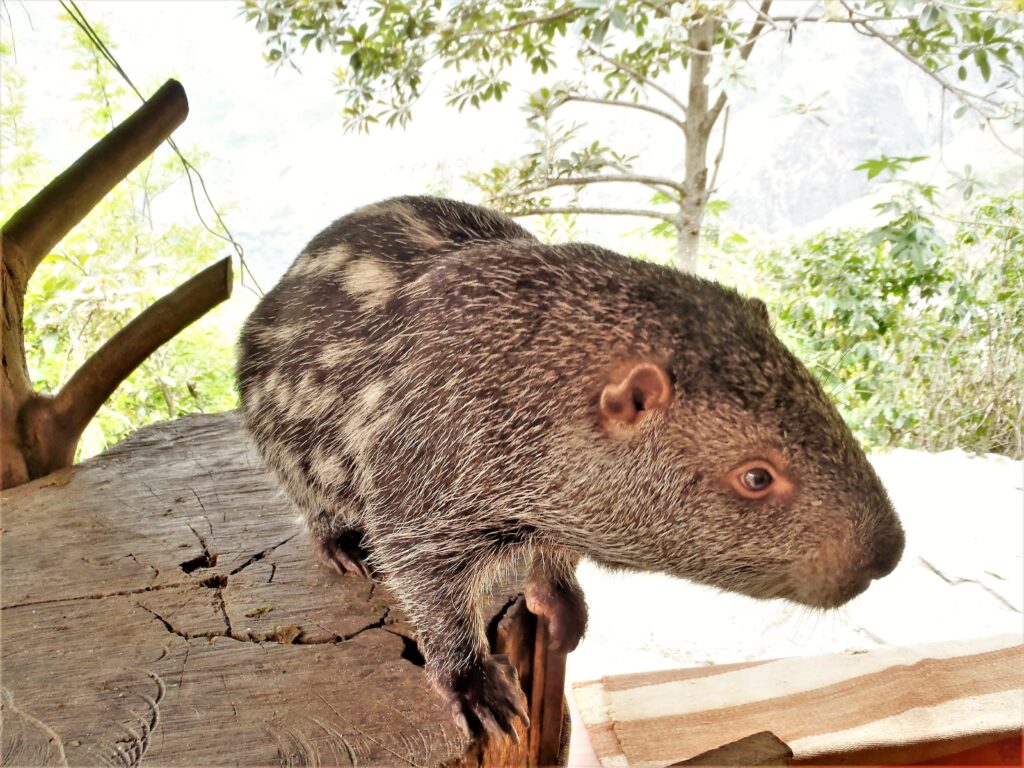
©Benjamin Frable via Wikimedia Commons / CC0 – License
Pacaranas are most commonly seen in pairs or small family groups consisting of the mother, father, and young. Pacarana courtship involves the male calling out for potential mates and approaching females bipedally, with the mating ritual consisting of a complex series of vocalizations, body contact, and grooming culminating in copulation.
The female’s gestation period ranges from 223 – 252 days. Litter sizes range from 1 to 4, with 2 most common. The newborns weigh anywhere from 570 – 700 grams and are born precocial; that is, similar to their cavy cousins, they are born looking like miniature versions of adults! Baby pacaranas come into the world fully-furred, open-eyed, and able to walk and eat solid food soon after birth. Of course, as mammals, they still primarily nurse from their mother at first.
Scientists estimate the pacarana’s lifespan to be about 9 years in the wild. They can live over a decade in captivity, however, with one source reporting at least 13 years.
Pacarana Conservation
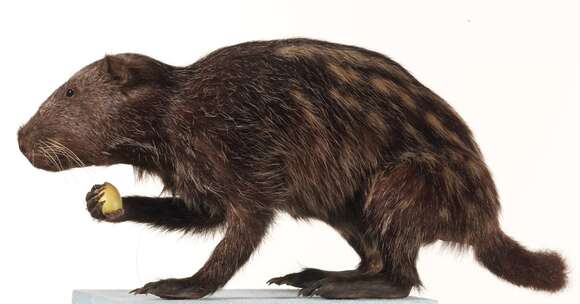
©Smithsonian NMNH via EOL / CC0 – License
The pacarana is almost always described as “rare,” and yet, there are currently no estimates of their total population. Although the IUCN Red List formerly listed the species as Endangered, on its most recent assessment it was downgraded to Least Concern. While the species is still considered rare in the wild, the IUCN argues that because of its wide distribution and its occurrence in protected areas, its population is unlikely to be declining at a rate that would qualify it for a threatened or endangered listing. Still, the IUCN concedes that “further information about this species ecology and habitat use is needed to better understand its vulnerability to threats and species extinction risk.” Pacaranas in the wild are most likely threatened by habitat loss, hunting, and predation by domestic dogs.
Unfortunately, pacaranas remain poorly studied in the wild and rare in captivity, making conservation management difficult. There is still so much left to learn about these super rodents of South America!









